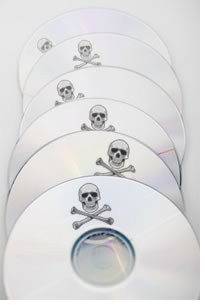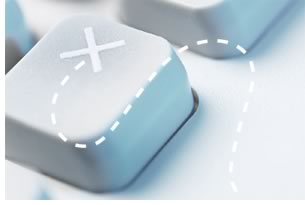

03/2005

by Russell Boniface
Architects responsible for using unlicensed software, whether knowingly or not, are at risk of up to five years imprisonment and fines up to $250,000. The software industry loses nearly $29 billion a year globally to piracy. Because computers make it easy to create an exact copy of a software file, software piracy is widespread. But architects may not be aware that the software they are using is an illegal duplicate made by software pirates.
Software pirates are professionals who deal wholesale in stolen software. Computer software is protected by U.S. and international copyright laws because it is considered a creative work. A company is purchasing the right to use the software under restrictions imposed by the software publisher, who is the copyright owner.
Architects may be vulnerable, according to research on the number of reports involving illegal use or duplication of software—a prime example is AutoCAD. A firm might unwittingly be using an illegal copy of a CAD application, which is feasible, given the large number of Internet auction sites that offer software files for “free” or at discounts.
Another common example of illegal use would be an architecture firm having 10 CAD licenses for a department of 15 designers. This is considered “client-server” overuse; a form of piracy.
A firm can also become vulnerable if it buys new computers from a company that loads illegal copies of software files onto the hard drives. The sale price is attractive and seemingly safe, but the deal is illegal.
“For too long, many people have considered illegal file sharing to be a crime that’s akin to jaywalking,” says Keith Kupferschmid, vice president of Intellectual Property Policy & Enforcement at The Software & Information Industry Association.
 Avoid copyright infringement
Avoid copyright infringement
In addition to imprisonment and the hefty fine, a firm caught using unlicensed
software can pay up to $100,000 for copyright infringement and $100,000
for trademark infringement. Autodesk, the makers of AutoCAD software,
has won many cases against companies using illegal copies of its software.
The company reports that it has recovered $3 million in 2004 and $63
million since 1989.
Autodesk is part of the Business Software Alliance (BSA), a nonprofit watchdog group representing the nation’s leading software manufacturers. The BSA has been known to enter offices with U.S. marshals and confiscate computers with unlicensed software. The organization generally receives a tip from a disgruntled employee. As a result, many firms have found themselves in court and paying fines upwards of $50,000. The most recent example occurred in mid-February when nine California companies paid BSA a combined total of just over $800,000 to settle claims that they had unlicensed copies of software programs.
Pirated software is in use on about 36 percent of all computers worldwide, according to the BSA. A study by the BSA discovered that only $51 billion of software was legally purchased out of the $80 billion installed. Piracy runs rampant in China, where no laws prevent theft of intellectual property. The software industry is urging the Bush administration to bring an international trade case against China to the World Trade Organization.
Worth the risk?
Apart from legal consequences, using counterfeit software can lead to
software viruses, corrupt disks, defective software, no technical support,
the inability to download new features, and the ineligibility by the
manufacturer to grant software upgrades.
 Mike Schiff, vice president of Data Warehousing and Business Intelligence
at Current Analysis Inc., points out that running pirate software will
come back to haunt users when a crisis arises. “If you’re
sitting there with pirated software and you have a problem, you’re
not going to get support,” says Schiff. “Imagine if you copied
someone’s CAD software and you’re in the middle of designing
a major project, and the software crashes the day before your proposal
is due. So you call the vendor and find out someone else has that license
number registered. You’re stuck. You can’t get your proposal
out.”
Mike Schiff, vice president of Data Warehousing and Business Intelligence
at Current Analysis Inc., points out that running pirate software will
come back to haunt users when a crisis arises. “If you’re
sitting there with pirated software and you have a problem, you’re
not going to get support,” says Schiff. “Imagine if you copied
someone’s CAD software and you’re in the middle of designing
a major project, and the software crashes the day before your proposal
is due. So you call the vendor and find out someone else has that license
number registered. You’re stuck. You can’t get your proposal
out.”
Schiff mentions that trying to download updates to pirated software just doesn’t work. “They (the manufacturer) will ask you to put the CD in the drive and put in the license number, but it’s a license number that someone else has. If you have a pirated version, they will know it.”
So why would anyone take the risk? “Because it’s a bargain,” says Schiff. “People don’t realize what they are exposing themselves to, such as viruses and lack of support and upgrades.”
Swab the deck
BSA encourages businesses to develop anti-piracy policies, acquire the
necessary licenses to meet copyright requirements, and conduct a software
audit. “Even well-managed companies can have software management
problems,” says Bob Kruger, vice president of enforcement for
BSA. “Companies can help prevent this problem by establishing
a comprehensive software asset management program.”
According to the BSA, a strong policy increases awareness of unlicensed software among employees and deters oversight. The logical first step is to write a policy for employees to sign that spells out the difference between legal and illegal usage. For example, explain that downloading unauthorized software from the Internet is prohibited, as well as copying software for any reason, such as giving it out to a third party, such as a vendor. Also mention that it is not allowed to install programs at the workstation computer. The policy can be posted on bulletin boards. The BSA Web site offers a sample policy statement with additional key points.
The next step is extremely important but can get overlooked: Centralize all computer and software purchases from one department. Don’t give this power to anyone else on staff. It sounds easy enough, but, for whatever reasons, this tactic often falls by the wayside, especially since employees have Internet access at their workstation.
It is important to buy only from a reputable, authorized application service provider, in writing, and make sure original user materials are sent; especially licenses. Consider using anti-virus software and always have computer passwords for employees. Also, think about installing a firewall to safeguard against hackers.
Inventory all software floppy disks, CDs, licenses, user documents, invoices, and proofs of purchase. Track software by serial, version, and model number. It is also a good idea to establish an annual audit system of the software that includes periodic spot checks. To determine what is illegal, a firm should compare what’s installed on computers with what’s allowed under the terms of the licenses. Keep in mind that some licenses only allow for a limited number of users.
 Counterfeit signals
Counterfeit signals
Purchasing software from unreliable or dubious Internet companies, e-mail
spam, and discount retailers can be trouble. Here are some signals
that might indicate your software came from a pirate’s loot:
- Free
deals and fantastic or unrealistic discounts
- CDs that are gold and not silver, blue, copper, or green
- Products without an original license or registration card, documentation,
and user manual—be on the lookout for handwritten, copied,
or poorly printed labels, documents, and packaging
- No standard manufacturer security features
- CDs that contains programs not typically included in a standard “suite” package,
especially if it has two programs on the CD from two separate publishers
- Companies that ask for credit card information in an insecure transaction
- The company offers no guarantees.
Many software packages, such those by Microsoft, have a certificate of authenticity label with a barcode. In the case of Microsoft, the right side of the certificate contains a metal thread running through a small “porthole.” If pulling the label back reveals that the thread runs through the label’s fibers, then the software is authentic.
Give pirates the hook
The increase of pirates hawking stolen software to unsuspecting firms
requires an increase in diligence by architects. Kruger points out
that firms need to be alert. “They need to pay as careful attention
to their software management as they do to other aspects of their business.”
Schiff believes pirated software is not worth the temptation and potential consequences. “The classic issue is it’s the intellectual property of someone else, and it’s unethical, which is absolutely true, but the temptation is still there. The bottom line is that unsupported software is not something you should be running in any environment. When a problem crops up, where are you going to go?”
Copyright 2005 The American Institute of Architects.
All rights reserved. Home Page ![]()
![]()
 |
||
This article
was inspired by an article in the January 2005 Design
Firm Management & Administration
Report.
|
||